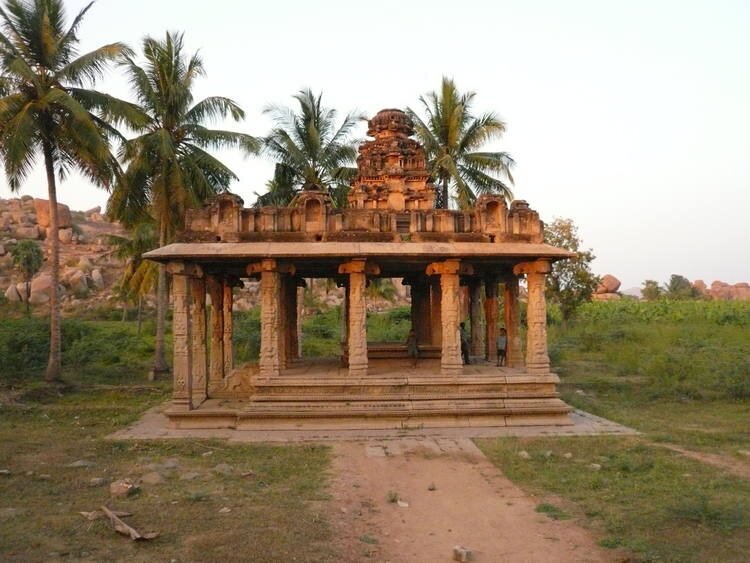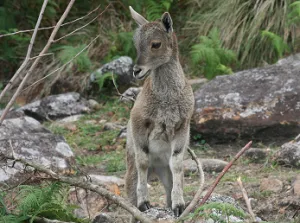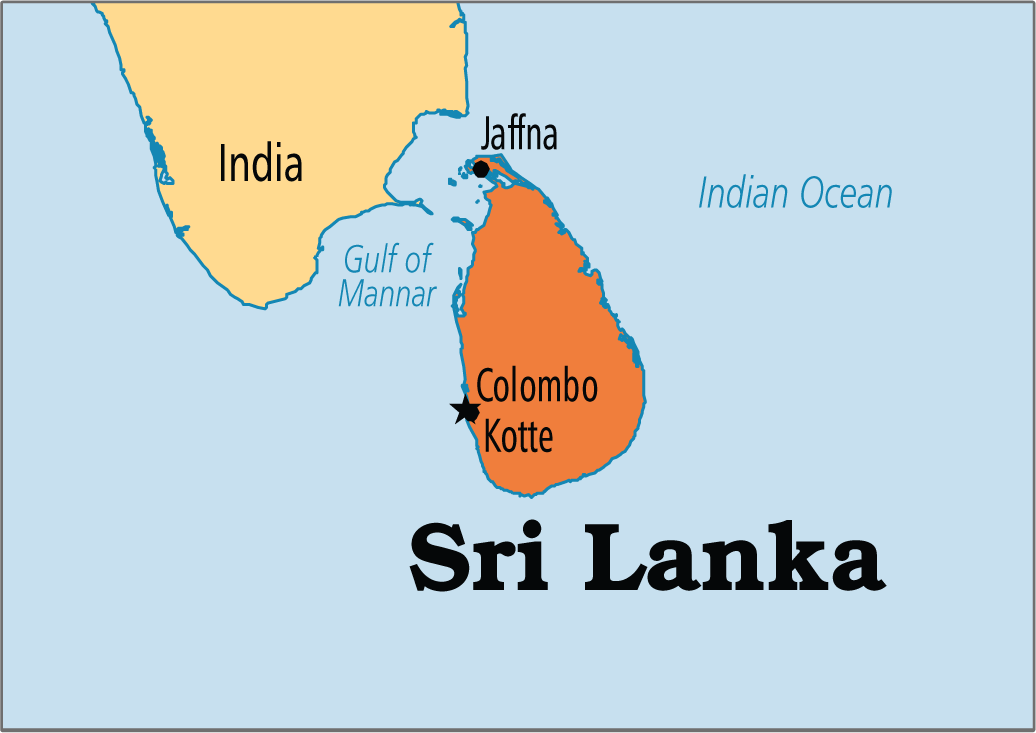International Relations
India- Sri Lanka
Why in News
At the invitation of the Prime Minister of India, Sri Lankan Prime Minister Mahinda Rajapaksa visited India from 8th–11th February 2020.
- The Prime Minister of Srilanka also went to the Kashi Vishwanath Temple in Varanasi, the Maha Bodhi temple in Bodh Gaya and Tirupati (Andhra Pradesh).
Key Points
- Tamil Issue:
- India expressed confidence in Sri Lanka to carry forward the process of reconciliation of Tamils in Sri Lanka.
- India has also requested to fulfil the aspirations of the Tamils for equality, justice, peace and respect in Sri Lanka.
- Development in War Affected Areas:
- Sri Lanka has requested India to build more houses in the north and east.
- India has so far helped build 46,000 homes in the war-affected areas.
- It has also requested to provide assistance for deep-sea fishing techniques which will help to create employment opportunities to people.
- Sri Lanka has requested India to build more houses in the north and east.
- Joint Marine Resources Management Authority:
- Sri Lanka has also proposed to set up a Joint Marine Resources Management Authority between two countries.
- The commission will have seven members from either side, including bureaucrats, researchers, fishermen’s association representatives.
- The proposed Authority is expected to find a lasting solution to the Palk Bay fisheries conflict.
- The Palk Strait is a strait between the Tamil Nadu state of India and the Jaffna District of the Northern Province of Sri Lanka.
- Debt Trap:
- They also discussed countering ‘debt traps’ experienced by Sri Lanka.
- Debt-trap diplomacy refers to the strategy used by China to lure or trap developing or underdeveloped countries like in Africa to borrow money to be used for much-needed infrastructure projects. China claims it to be a simple tactic for financial strategies.
- Indian Ocean Region:
- Both the countries agreed to provide close cooperation for peace and prosperity in the Indian Ocean Region and even in the Indo-Pacific region.
- India also reinforced the security of Indian ocean with its ‘Neighbourhood First’ policy and SAGAR (Security and Growth for all in the Region).
- SAGAR is an articulation of India’s vision for the Indian Ocean.
- SAGAR has elements such as enhancement of capacities to safeguard land and maritime territories & interests; deepening economic and security cooperation in the littoral; action to deal with natural disasters and maritime threats like piracy, terrorism.
- Terrorism:
- Both countries aimed to strengthen the contacts and cooperation between the counter-terrorism agencies of the two countries.
- India is Sri Lanka's closest neighbour. The relationship between the two countries is more than 2,500 years old and both sides have built upon a legacy of intellectual, cultural, religious and linguistic intercourse.
- During the course of the civil war, India supported the right of the Government of Sri Lanka to act against terrorist forces.
- The Indian Housing Project is Government of India’s flagship project of developmental assistance to Sri Lanka. Its initial commitment is to build 50,000 houses for those affected by the civil war as well as for the estate workers in the plantation areas.
- Given the proximity of the territorial waters of both countries, especially in the Palk Straits and the Gulf of Mannar, incidents of straying of fishermen are common. Both countries have agreed on certain practical arrangements to deal with the issue of bona fide fishermen of either side crossing the International Maritime Boundary Line.
- India and Sri Lanka conduct joint Military ( 'Mitra Shakti') and Naval exercise (SLINEX).
- Recently, the Chennai (India) -Jaffna (Sri Lanka) flight service has resumed after a gap of 41 years.
- The flight operations were suspended during the decades-old civil war in Sri Lanka.
Governance
Pesticides Management Bill, 2020
Why in News
The Pesticides Management Bill, 2020 has been approved by the Union Cabinet.
- The Bill will regulate the business of pesticides and compensate farmers in case of losses from the use of agrochemicals.
- Agrochemicals imply chemicals used in agriculture, such as a pesticide or fertilizer.
- Currently, the pesticide business is regulated by rules under the Insecticides Act 1968.
Key Features of the Bill
- Pesticide Data: It will empower farmers by providing them with all the information about the strength and weakness of pesticides, the risk and alternatives. All information will be available openly as data in digital format and in all languages.
- Compensation: The Bill has a unique feature in the form of a provision for compensations in case there is any loss because of the spurious or low quality of pesticides.
- If required, a central fund will be formed to take care of the compensations.
- Organic Pesticides: The Bill also intends to promote organic pesticides.
- Registration of Pesticide Manufacturers: All pesticide manufacturers have to be registered and bound by the new Act, once it is passed. The advertisements of pesticides will be regulated so there should be no confusion or no cheating by the manufacturers.
Use of Pesticides in India
- India is among the leading producers of pesticides in Asia.
- In the domestic market, Maharashtra, Uttar Pradesh, Punjab and Haryana are among the states with the highest recorded consumption.
- Spurious Pesticides:
- They harm crop, soil fertility and the environment.
- Spurious agrochemicals are responsible for the losses of not just farmers but also producers of genuine agrochemicals and the government, which loses revenue from the sales of the counterfeit versions of the real farm inputs.
Insecticides Act, 1968
- It was brought into force with effect from August 1971 with a view of regulating the import, manufacture, sale, transport, distribution and use of insecticides in order to prevent risk to human beings and animals.
- Central Insecticides Board was established under Section 4 of the Act and it works under the Ministry of Agriculture and Farmers’ Welfare.
- The board advises the central government and state governments on technical matters arising out of the administration of the act and to carry out the other functions assigned to it.
Indian Polity
Reservation Issue in AP
Why in News
The Supreme Court has questioned the Andhra Pradesh government’s decision in 1988 to provide a 100% reservation to Scheduled Tribes for teacher posts in Scheduled Areas.
Key Points
- The Supreme Court has mentioned that the 100% reservation would deprive other backward communities (including SCs, OBCs) of availing reservation benefits.
- The notification to provide a 100% reservation to Scheduled Tribes (STs) for teacher posts in Scheduled Areas was issued by then governor of the Andhra Pradesh.
- The Fifth Schedule of the Indian Constitution dealing with the administration of Scheduled Areas vests the Governor with legislative and administrative powers.
- The Supreme Court also questioned the availability of data based on which the Governor of the Andhra Pradesh decided that ST is the only deprived group in the area.
- Article 16 (4) of the Constitution empowers the state to make any provision for the reservation of appointments or posts in favour of any backward class of citizens which, in the opinion of the state, is not adequately represented in the services under the state.
- The Supreme Court ruled that the Governor's decision can’t be above the law while referring to its judgment in Indira Sawhney case of 1992 which mentioned that the reservation limit should not exceed 50 % except in exceptional circumstances.
Fifth Schedule of the Indian Constitution
- The Fifth Schedule of the Constitution deals with the administration and control of scheduled areas and scheduled tribes in any state except the four states of Assam, Meghalaya, Tripura and Mizoram.
- The scheduled areas are treated differently from the other areas in the country because they are inhabited by ‘aboriginals’ who are socially and economically rather backwards, and special efforts need to be made to improve their condition. Therefore, the whole of the normal administrative machinery operating in a state is not extended to the scheduled areas.
- Declaration of Scheduled Areas: The President is empowered to declare an area to be a scheduled area. He can also increase or decrease its area, alter its boundary lines, rescind such designation or make fresh orders for such re-designation on an area in consultation with the governor of the state concerned.
- Administration of Scheduled Areas:
- Executive Power of State and Centre
- The executive power of a state extends to the scheduled areas therein. But the governor has a special responsibility regarding such areas. He has to submit a report to the President regarding the administration of such areas, annually or whenever so required by the President.
- The executive power of the Centre extends to giving directions to the states regarding the administration of such areas.
- Tribes Advisory Council: Each state having scheduled areas has to establish a tribes advisory council to advise on welfare and advancement of the scheduled tribes.
- Law applicable to Scheduled Areas
- The Governor is empowered to direct that any particular act of Parliament or the state legislature does not apply to a scheduled area or apply with specified modifications and exceptions.
- He can also make regulations for the peace and good government of a scheduled area after consulting the tribes advisory council.
- Also, a regulation may repeal or amend any act of Parliament or the state legislature, which is applicable to a scheduled area. But, all such regulations require the assent of the President.
- Executive Power of State and Centre
Governance
Foreign Ambassadors in Srinagar
Why in News
Twenty-five foreign Ambassadors visited Srinagar, Jammu and Kashmir (J&K) to assess the situation in the region nearly six months after the Central government revoked Article 370.
- They asked for suggestions from locals including few politicians, elected grass-roots representatives, editors and traders on the measures for moving ahead.
- Around 100 local delegates formed separate groups and met the envoys.
- These delegates also met the Members of the European Parliament in October 2019.
- The Ministry of External Affairs has said that there would be more such visits as the situation in J&K further normalises.
Significance
- It assumes significance because of the U.S. President’s upcoming visit to India and the European Union’s (EU) plan to discuss the Citizenship Amendment Act (CAA) and reading down of Article 370 in the European Parliament in March 2020.
- The visit marks an important step by the government after it faced huge criticism in the EU and in the US over scrapping Article 370.
- The visit gives a better understanding of the cultural and religious diversity of the state apart from giving a clear view of the development and governance priorities of the region.
Important Facts For Prelims
Jal Jeevan Mission
Why in News
Rajasthan has demanded higher central assistance for Jal Jeevan Mission (JJM) to achieve the targets of the mission.
Jal Jeevan Mission
- Jal Jeevan Mission (JJM) envisages supply of 55 litres of water per person per day to every rural household through Functional Household Tap Connections (FHTC) by 2024.
- JJM focuses on integrated demand and supply-side management of water at the local level.
- Creation of local infrastructure for source sustainability measures as mandatory elements, like rainwater harvesting, groundwater recharge and management of household wastewater for reuse, would be undertaken in convergence with other government programmes/schemes.
- The Mission is based on a community approach to water and includes extensive Information, Education and Communication as a key component of the mission.
- JJM looks to create a jan andolan for water, thereby making it everyone’s priority.
- Funding Pattern: The fund sharing pattern between the Centre and states is 90:10 for Himalayan and North-Eastern States, 50:50 for other states, and 100% for Union Territories.
- The Central government has recently released the operational guidelines for JJM.
- For the implementation of JJM, following institutional arrangement has been proposed:
- National Jal Jeevan Mission (NJJM) at the Central level
- State Water and Sanitation Mission (SWSM) at the State level
- District Water and Sanitation Mission (DWSM) at the District level
- Village Water Sanitation Committee (VWSC) at Village level
- Every village will prepare a Village Action Plan (VAP) which will have three components:
- Water source & its maintenance
- Water supply and
- Greywater (domestic wastewater) management.
- For the implementation of JJM, following institutional arrangement has been proposed:
Important Facts For Prelims
Wainganga River
- Wainganga River is one of the key tributaries of the river Godavari.
- Source: The river rises in the Mahadeo Hills in the Seoni District of Madhya Pradesh.
- Drainage Basin: It drains Madhya Pradesh and Maharashtra.
- Longest Tributary: Kanhan River, which rises in the hills at the southern edge of the Satpura Range in the Chhindwara District (Madhya Pradesh).
- The Wainganga after joining the Wardha River at Chaprala in Gadchiroli district (Maharashtra) is known as the Pranahita River.
- Wardha river originates in Satpura Range in Betul District, Madhya Pradesh.
- Penganga river is a major tributary of the Wardha river and rises in the Ajanta range.
- Pranahita river empties into the Godavari River at Kaleshwaram, Telangana.
- Pranahita river is the largest tributary of the Godavari river covering about 34% of its drainage basin.
- Gosekhurdh irrigation project is being constructed on the Wainganga River.
Godavari River
- It is India's second longest river after the Ganga. Its source is in Trimbakeshwar, Maharashtra. It flows east for 1,465 kilometres, draining the states of Maharashtra, Telangana, Andhra Pradesh, Chhattisgarh, Odisha, and Karnataka.
- Major Tributaries: Indravati, Pravara, Wardha, Wainganga, Kanhan, Purna, Pranhita, Sabari, Manjira, Bindusara River etc.
- The Kaleshwaram lift irrigation project is an under-construction multi-purpose irrigation project on the Godavari River in Kaleshwaram, Bhoopalpally, Telangana.
- The project starts at the confluence point of Pranahita River and Godavari River.
Important Facts For Prelims
Hampi
Why in News
Recently, the Supreme Court confirmed the Karnataka government’s decision to demolish restaurants, hotels, guest houses and other buildings constructed in Virupapura Gaddi.
- Virupapura Gaddi is an oval islet formed by the Tungabhadra river and located west of the Hampi (UNESCO World Heritage Site).
- The constructions were in violation of the Mysore Ancient and Historical Monuments and Archaeological Sites and Remains Act, 1961.
- The Karnataka government released a notification in 1988 under Section 19(3) of the 1961 Act indicating the entire village of Virupapura Gaddi as a protected zone.
Hampi
- The site of Hampi comprises mainly the remnants of the capital city of the Vijayanagara Empire (14th-16th century CE), the last great Hindu Kingdom.
- It encompasses an area of 4187, 24 hectares, located in the Tungabhadra basin in Bellary District, Central Karnataka.
- Hampi’s spectacular setting is dominated by river Tungabhadra, craggy hill ranges and open plains with widespread physical remains.
- The sophistication of the varied urban, royal and sacred systems is evident from the more than 1600 surviving remains that include forts, riverside features, royal and sacred complexes, temples (e.g. Vittala Temple), shrines, pillared halls, Mandapas etc.
- One of the unique features of temples at Hampi is the wide chariot streets flanked by the row of pillared mandapas.
Important Facts For Prelims
Nilgiri Tahr
- Scientific Name: Nilgiritragus hylocrius

- Habitat: Western Ghats in southern India (Tamil Nadu and Kerala), Nilgiri Tahr is the state animal of Tamil Nadu.
- Threatened By: Hunting, habitat loss (mainly from domestic livestock and spread of invasive plants), climate change
- Protection Status:
- IUCN Red List: Endangered
- Indian Wildlife Protection Act, 1972: Schedule I
Important Facts For Prelims
Yaravirus
Why in News
Researchers have discovered an unusually small virus in a lake in Brazil.
- The virus has been named Yaravirus after ‘Yara’, a water-queen figure in Brazilian mythology.
- The Yaravirus infects amoeba and has genes that have not been described before, something that could challenge how Deoxyribonucleic Acid (DNA) viruses are classified.
- DNA viruses are classified based on the protein that makes up their shell, or capsid. The Yaravirus' capsid doesn't resemble any previously known protein.
- The Yaravirus does not infect human cells.
Virus
- A virus is a small parasite that cannot reproduce by itself. Once it infects a susceptible cell, however, a virus can direct the cell machinery to produce more viruses.
- Most viruses have either Ribonucleic acid (RNA) or Deoxyribonucleic Acid (DNA) as their genetic material.
- Diseases caused by Virus: HIV/AIDS, smallpox, Ebola, etc.





